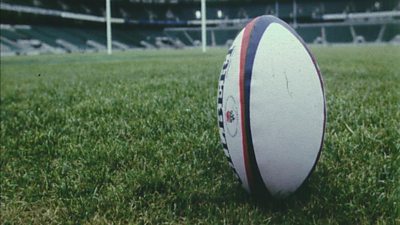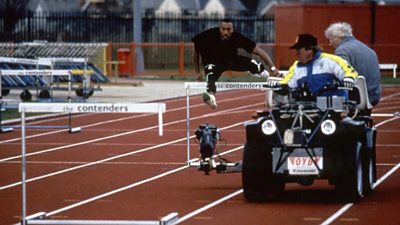These facilities may require a complete fit-out, including set design, dressing and fitting out with broadcast and lighting equipment.
This also covers ad hoc presentations around the venue.
The hazards and risks will vary depending upon the type of studio construction and the knowledge of the persons involved in the studio production. Allowances must also be made for those guests who may be unfamiliar with the studio broadcast environment.
What Can Go Wrong?
- Slip, trip and fall accidents and incidents caused by the unfamiliarity with the studio or location environment, access, layout and temporary arrangements or poor set design and build.
- Failure of the structures could lead to entrapment or collapse
- Fire, electrical shock.
General Hazards
- Cables causing a tripping/falling hazard.
- Person or object falling (eg camera lens) while working at height.
- Musculo-skeletal injury from handling or lifting heavy equipment.
- Severe tiredness/fatigue from long working hours, resulting in loss of concentration and/or poor decision making.
- Prolonged exposure to cold/wet or hot/sunny weather, causing ill-health and/or poor dexterity
- Noise exposure from crowds or sporting activity.
- Hit by/struck by equipment, vehicle or animal used in sporting activity, or danger caused to sports competitors from broadcast activity.
- Event fire or other emergency (including Terrorist incident).
- Electric shock or fire due to unsafe connection to OB electrical supply.
- Setting Up Temporary Studios / Presentation.
- Fire in presentation studio or other production area.
- Acute ill-health from inadequately ventilated studio.
- Unsafe use of broadcast vehicles.
- Potentially unsafe ladders and scaffold structures, camera positions, gantries; and risky access routes to them.
Legal/Â鶹ԼÅÄ Requirements
- Wherever possible a Â鶹ԼÅÄ pre-vetted contractor should be engaged to build the temporary structure required. However, this may not be possible if for example the temporary structure has been provided by the venue. In this case, there is still a requirement to ensure that an adequate inspection has taken place and certification has been provided.
- The Construction (Design & Management) Regulations 2015 (CDM 2015) came into force in April 2015, replacing CDM 2007 and are now applicable to the use of temporary staging, rostra and riser within the event industry.
Control Measures
Temporary Structure Build
- At the initial planning stage discuss how the requirements of CDM 2015 will be discharged and who will undertake the roles of Principle Designer & Principal Contractor.
- All temporary structures are to be fitted or installed by competent persons only.
- The installer will inspect the completed temporary structure(s) and inform the producer that it has been inspected and is now safe to use, and provide certification to that effect.
- Re-certification will be required for any major structural changes made after the initial build / installation.
- The installer will ensure that no gaps or uneven joints are present.
- All rostra or risers will be inspected by the producer prior to use to satisfy themselves it is safe to use, any problems found should be brought to the attention of the installer.
- Outdoor structures must have an adequate weather plan (especially wind monitoring) in place and a clear action plan detailing; what actions should be taken, when, and by whom.
- Reinspection of a structure may well be required if adverse weather conditions have prevailed - requirements should be detailed in the handover certificate.
General Controls
- Avoid trailing cables. Route cables safely and securely ramp, mat or fly cables that by necessity cross pedestrian routes.
- See ‘Working on Broadcast Gantries & Platforms’.
- Take every opportunity to avoid manual handling wherever possible, see ‘Manual Handling’.
- Tiredness/Fatigues from Long Working Hours. See ‘Tiredness, Fatigue & Trauma’.
- Provide weather forecast information and brief crew/staff unfamiliar with the working environment on suitable clothing and sun protection. See ‘Weather’.
- Be aware of noise levels likely at the event and take appropriate hearing protection if necessary. See ‘Noise Exposure’.
- Hit/Struck by objects at Sports Events. See ‘Recording & Filming Track/Pit Side at Sports Events’.
- Establish clear points of contacts with venue, competition organiser and host broadcaster.
- Consider buying seating to extend working space, ESPECIALLY if the media position restricts the view of paying spectators.
- Request additional stewards to be allocated to the position if required.
- Wear Â鶹ԼÅÄ logo unless this raises the personal risk.
- When planning working positions consider easy access to exit routes.
Aggression and Crowds
- Research likelihood of aggression and expected profile of fans & crowd.
- Use a back-watcher/second person if aggression is likely.
- Try to diffuse aggression if threatened and stop recording/filming and leave if violence is imminent.
- Plan what to do if violence escalates, including escape routes &rendezvous points.
- Ensure staff are properly trained and experienced for the environment, eg for football, rugby and boxing the Â鶹ԼÅÄ Working in Crowds course is strongly recommended.
Fire and Emergency
- Find out the emergency arrangements in place at the venue and ensure all staff are aware, eg through site induction or safety brief.
- When working in an unfamiliar venue, note your safe route out of building & agree an assembly point for your team (at a safe distance).
- In the event of a fire or emergency follow instructions from venue staff while paying attention to crowd movement and any developing situation the venue may not be aware of. Keep colleagues alerted and pair or group up to protect each other as you make your way out.
- Never obstruct fire exits or emergency vehicle routes with equipment set-up or storage.
- Disabled members of the team should notify the site manager if they have particular emergency evacuation needs.
- Find out venue emergency arrangements in place during rig or de-rig as normal routes may be out of use or exits locked outside event hours.
- Ensure strict housekeeping is maintained to keep fire exits and emergency access/egress routes free & uncluttered.
- Setting Up Temporary Studios / Presentation
- Provide fire extinguishers and consider a smoke alarm for all dedicated areas controlled by the production, if none are provided by the site
- Liaise with venue to ensure suitable working space is allocated, separated from spectator areas where possible.
- Ensure all fabric materials and construction materials used with a presentation studio are suitably fire resistant.
- Temporary studios and commentary boxes must be designed and built by competent persons to prevent collapse
- Ensure adequate ventilation in studio locations and commentary boxes. Provide mechanical ventilation if necessary.
- Provide safe access/egress to all presentation and linking positions – ensure clear routes and use steps in preference to ladders if at all possible.
- Provide hand-rails on steps.
- Use of vetted contractors. Ensure ladders and scaffold structures are safe and have the appropriate scaffold tags and current handover documentation. See Gantries and Platforms and Scaffold guidance.
Division Specific Issues
- No division specific issues.
FAQs/Did You Know?
- The UK government publication ‘Guide to Safety at Sports Grounds’ (the Green Guide) was first published in 1973 after the Ibrox disaster when 66 people were killed. Subsequent versions were published following the Bradford City stadium fire in 1985 when 56 people were killed and the Hillsborough disaster in 1989, when 96 people were killed. The current edition was published in 2018.
Recommended links
-
-
-
-
Guide to Safety at Sports Grounds (Green Guide) available for purchase
-
Covering a variety of safety subjects when broadcasting at sports events
Related Topics
-

Temporary Stages and Rostra
This guide covers both temporary rostra and risers together with temporary staging. -

Seating Audiences Safely
How to seat our audiences safely at events and shows -

CDM Overview
Brief guidance on Construction Regulations -

Broadcast: Presentation and Linking Positions
Presentation or linking from purpose-built studio facilities. -

Working at Height: Scaffolding (tubular type)
Guidance on working on scaffolding -

Working at Height: Broadcast Gantries and High Level Platforms
Working on broadcast gantries and platforms
Outside Broadcast topics
-

Broadcast Vehicles
A guide to broadcast vehicles including, satellite vehicles, radio cars and uplink vehicles etc. -

Broadcast: Presentation and Linking Positions
Presentation or linking from purpose-built studio facilities. -

Electrical Safety in Studios
A guide to using electrical equipment in studios. -

OB Venue Rigging
Rigging a TV or Radio OB venue can be a multi-hazard activity which should be carried out by competent personnel only. -

OB Riggers
Competence criteria for OB riggers. -

Sports Events: Recording or Filming
Guidance on filming on track/pit side. -

Temporary Electrical Systems and BS 7909
A guide to using electrical equipment on location. -

Weather
Guidance on working in different weather conditions. -

Working on Broadcast Gantries & Platforms
Working on media positions provided primarily within stadiums.
More from SSR
-
Your platform to record accidents, risk assessments, assurance monitoring and inspections
-
Safety Equipment Stores
Just one number to call: 020 3614 5155 -
Â鶹ԼÅÄ Safety Guidelines
An A-Z of Â鶹ԼÅÄ's Health and Safety Guidelines -
Safety Advice Line: 0370 411 0464 Email: safety@bbc.co.uk
- A-Z of Â鶹ԼÅÄ Safety Guidelines
- Accident Reporting and Investigation
- Â鶹ԼÅÄ Health & Safety Policy
- Contractors (incl. vetted lists)
- Contributors
- Fire Safety
- Freelancers
- Independent Production Companies
- Risk Assessment
- Safety Alerts
- Safety Responsibilities
- Safety Training
- Sets & Premises Safety Guide
Events guidance - key links:
- Exhibitions
- General Guidance
- Indoor Location Recce Checklist
- Outdoor Location Recce Checklist
- Major Incidents & Emergency Planning
- Marketing and Promotional
- Noise Exposure
- Planning and Management
- Responsibilities
- Responsibilities Form
- Laser Lighting Effects
- Strobe Lighting
- Temporary Stages and Rostra
Health topics - key links:
- (Â鶹ԼÅÄ network only)
- Contributors Fitness to Participate
- Display Screen Equipment (DSE)
- (Â鶹ԼÅÄ network only)
- First Aid and Welfare on Location
- International Travel - Risks & Health
- Manual Handling
- Mental Health: Â鶹ԼÅÄpage
- (Â鶹ԼÅÄ network only)
- Personal Health and Wellbeing
- Pregnancy
- Psychological Trauma Support & Trauma Risk Management (TRiM)
- Tiredness and Fatigue
- Travel Health Contacts
Â鶹ԼÅÄ High Risk - key links:
- CBRN and Industrial Spills
- Covert Filming
- Crisis Management and Security Support
- Demonstrations, Protests and Crowds
- Disaster Coverage
- Door Stepping
- (Â鶹ԼÅÄ network only)
- (Â鶹ԼÅÄ network only)
- Public Order
- Safety Equipment Stores
Â鶹ԼÅÄ Journalism - key links:
Â鶹ԼÅÄ Productions - key links:
- Aerial Filming and Airfields
- Animals: Displaying and handling for performance
- Boats: Working on
- Children and Young People
- Driving
- Electrical Equipment and Systems
- First Aid and Welfare on Location
- Food Safety (Cooking and Catering)
- Remote Location Working
- Roads and Streets: Working by
- Security of Productions on Location
- Stunts
- Tiredness and Fatigue
- Unmanned Aerial Systems (UAS aka Drones)
- Vehicles: Recording in, from and around
- Working at Height: Mobile Elevating Work Platforms
- Working at Height: Tower Scaffolds
Â鶹ԼÅÄ Radio - key links:
- (Â鶹ԼÅÄ Network only)
Â鶹ԼÅÄ Security - key links:
Â鶹ԼÅÄ Sport - key links:
About this site
This site describes what the Â鶹ԼÅÄ does in relation to managing its health, safety and security risks and is intended for those who work directly for the Â鶹ԼÅÄ.
It is not intended to provide instruction or guidance on how third parties should manage their risks. The Â鶹ԼÅÄ cannot be held liable for how this information is interpreted or used by third parties, nor provide any assurance that adopting it would provide any measure of legal compliance. More information
Some links on this site are only accessible when connected to the Â鶹ԼÅÄ network
